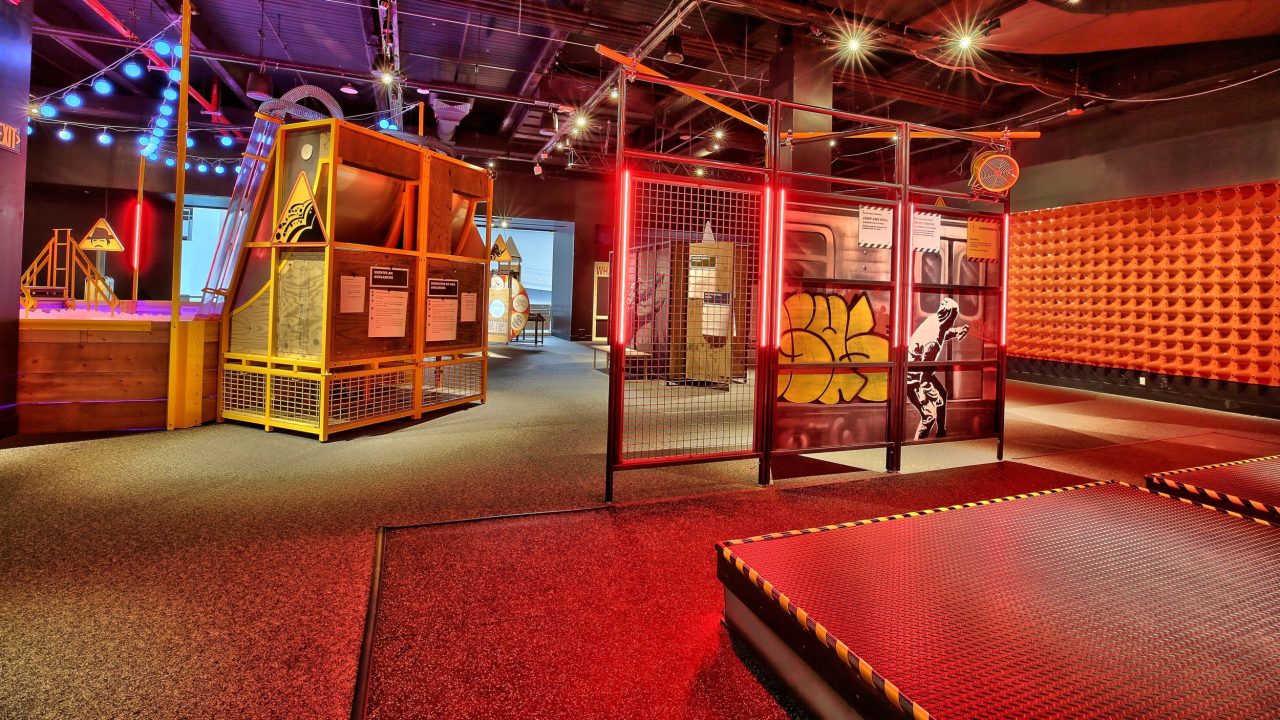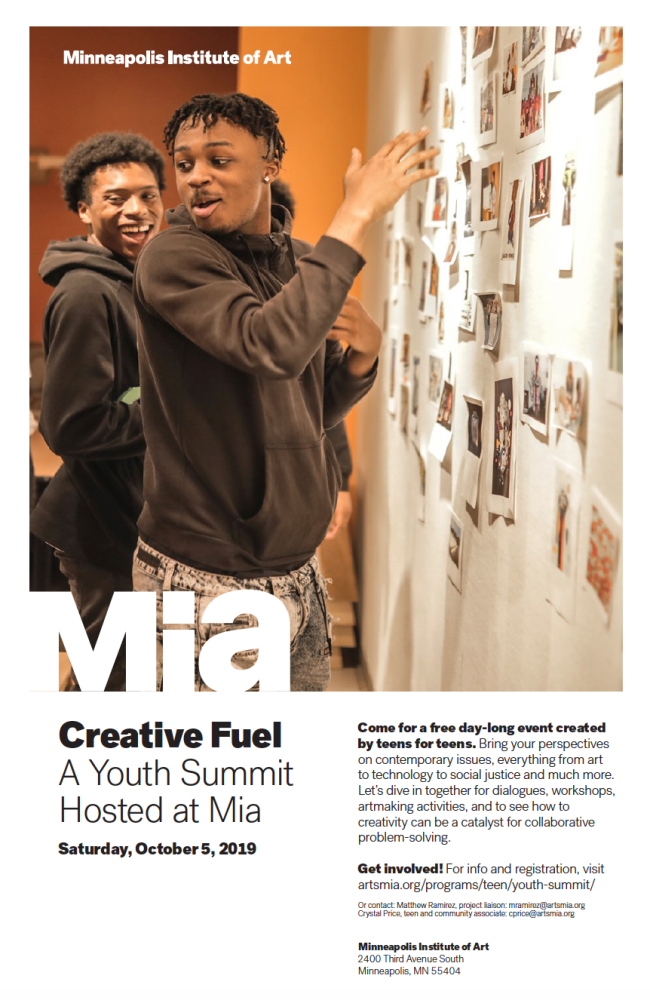
Today on the Alliance Blog, we’re featuring a post by a Social Media Journalist for AAM’s 2019 Annual Meeting & MuseumExpo. The application for this year’s Social Media Journalist opportunity, in San Francisco, is now open! See the form for full details; applications close February 14.
What was the last thing you were craving?
A chill night at home with a face mask? A hike through the mountains with friends? What was it, and did you act on it?
We all have these cravings and urges. But how many involve the desire to pull out your phone? This is a question I hear more and more among my creative friends and loved ones. How do you compete with a device that is with people 24/7?
However, one of the benefits of phones for the museum field is that they can amplify, rather than compete for, fandom and emotional connections, through the aid of social media platforms. What people are craving is an emotional experience. Phones are just the easiest, most immediate emotional experience we all have (and something we don’t need to spend extra money on for a ticket, transportation, etc.). To draw people to your institution, I’d argue, you need to generate a stronger emotional connection with them.
How do you develop these new emotional experiences people are craving and ensure people know about them?
You probably already have the staff and the stories equipped to do it. It’s all in figuring out how to pair the emotional storytelling to a program, an event, an exhibition, or a fusion of all three. In my personal work as an experience consultant and content developer, I have been involved in a few recent projects that have done this, and will mention two very different examples in hopes of stimulating conversation around emotional experience design.
Experience A–Creative Fuel: A Youth Summit at the Minneapolis Institute of Art
I was brought on in March 2019 as a project liaison to help plan a Youth Summit. My job was to support teens in creating a day-long event exploring the intersections of art and social change; to coalesce around issues that mattered to them such as climate change, LGBTQ+ rights, and social justice. In planning the summit, we hosted a co-visioning session with youth who work at the museum, youth at partner organizations, and their adult leads. The main takeaway from the co-visioning session was they wanted to have FUN. How could we accomplish this while exploring serious issues? Through the idea of creativity.
The museum sparks creativity, so leaning into that, we developed the name “Creative Fuel.” As a community, we recognized we must take creative risks if we want to address the pressing issues of today. In order to tap into your creativity, I’d make the case you need to tap into your emotions. One way we did this was to introduce surprise to the keynote panel, in which two teen employees posed questions to three adults over thirty years old. Rather than asking the questions in a planned order, the teens pulled questions out of a hat, which gamified the situation. When the questions or responses seemed like they were becoming less intriguing to the audience, the teens explained they had a question to change things up that wasn’t in the hat, pulling the audience’s eyes off their phones and back to the stage. These questions didn’t directly involve social justice issues but more personal things like: “What’s your favorite album or musician you are listening a lot to right now?” (Leading a panelist to surprise the teens that they were listening to the same music as them) to “How good are you at building IKEA furniture?” These questions allowed the audience to reaffirm that they too had authority over their own opinions. Afterwards, several teens went up to the panelists to exchange artists they loved. They had an emotional connection.
We were intentional about showcasing that the museum is a place for connection, that everyone brings their own expertise to the museum (in music, in art, in perspectives, etc.) and that’s exactly what artists are always doing: exchanging ideas, reflecting on other opinions, discovering new ways of thinking. We were also intentional about the marketing for the event, using an image of young people smiling and laughing at the co-visioning planning event, taken by a local youth we hired. We wanted to make sure that youth were not only at the core of designing the event, but also marketing it as something fun that could connect with fellow teens.

Experience B–The Worst-Case Scenario: Survival Experience
When I first heard we were going to be involved in this project at Geoffrey M. Curley + Associates with The Franklin Institute in Philadelphia, I was elated to see a museum ready to tackle science through a very useful tool: humor.
The exhibition, based on the best-selling Worst-Case Scenario book series, addresses DANGER. What do you do in dire situations like escaping a mountain lion, leaping from a moving vehicle, being able to tell if someone is lying, or surviving a flash flood or an avalanche? The exhibition has countless lessons, but at the crux of it all, it’s about growing grit. As they worked through the interactive scenarios, we didn’t want guests worrying about succeeding the first time. Where talent/aptitude/skills fall short, effort can often count twice as much.
We positioned the guest’s body as the primary tool for learning, as they observed themselves in extreme situations and learned from the experience. To accomplish this, we used four engagement and learning touchpoints. The first are interactives, both highly active and passive, so all can participate. The second are a high volume of didactics, in the iconic comical and informational style of the books, explaining the use of the activities in the real world. The third is emphasizing the science behind the scenarios, breaking it down into a procedural process of: try this, then that. The fourth are audio stations, which provide a fourth touchpoint for those who prefer auditory learning and diving deeper into additional topic points.
Rather than a traditional approach to science engagement, we decided to have no true experiments in The Worst-Case Scenario: Survival Experience, and instead created a facility for exploration and discovery that is tied to humor. Facilitation in these spaces helps set a tone for the guests that it’s okay to be silly and even encouraged by the facilitator. A live actor dubbed the “Worst-Case Pro” helps you get in survival mode and remind you to always: “Be prepared. Don’t panic. Have a plan.” Now the guests have a role to play: “Worst-Case Pro trainee.” Prompting guests to be a “character” and take on an “identity” in an exhibition can be a really effective way to pull them into a world that you created and have an emotional experience first, so that guests might not even realize how much they learning about a subject, and even themselves.
How is your institution connecting emotionally with your audiences?
About the author:
Matthew Ramirez is currently a teaching artist and a project liaison for the Minneapolis Institute of Art and content development–expansion strategist for Geoffrey M. Curley + Associates. Matthew likes to say he makes “spaces”–spaces to play, investigate, listen, share, and learn together. Matthew works with young people to lifelong learners and communities. He currently serves on the board for the Cycling Museum of Minnesota and has participated as an installation artist in Northern Spark, a late-night art festival that lights up the Twin Cities.
Feeling inspired? Apply now to join this year’s cohort of social media journalists at #AAM2020 in San Francisco! Get complimentary registration in exchange for sharing your experience with the field. For full details, see the application form. Applications are due by February 14, 2020.








